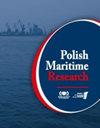Universal Sea/Fem Based Method for Estimation of Vibroacoustic Coupling Loss Factors in Realistic Ship Structures
IF 2
3区 工程技术
Q2 ENGINEERING, MARINE
引用次数: 0
Abstract
Despite the fact that there is an existing body of literature addressing the computation of Coupling Loss Factors (CLFs) via the Finite Element Method (FEM), no publications have sufficiently taken into account real structural joints in their approach. Previous research has focused on academic cases of trivial connections, rarely involving more than two steel plates. To enable Statistical Energy Analysis (SEA) on a real ship, a methodology for determining CLFs for non-trivial systems is proposed, considering realistic boundary conditions and irregularities that can occur in marine structures. Based on the method, a library of CLFs is created by selecting the tested connections to enable modelling of about 90% of the acoustic paths on an existing jack-up vessel. Boundary conditions were set by introducing spring elements with a stiffness calibrated to the type of connection and taking the adjacent structure into account. In previous works, CLFs were determined for basic connections of rectangular plates. The lack of scantling variations, ignoring discontinuities and only defining parallel edges in the considered models, lead to the overestimation of energy transmission in real structures. To consider the influence of the above, random deviations from the initial stiffness of the springs at individual edges and point restraints at random points are introduced in this paper.基于海/场的通用方法估算现实船舶结构中的振声耦合损失因子
尽管已有大量文献探讨了通过有限元法(FEM)计算耦合损失因子(CLF)的问题,但没有任何出版物在其方法中充分考虑到实际结构连接。以往的研究主要集中在琐碎连接的学术案例上,很少涉及两块以上的钢板。为了在真实船舶上进行统计能量分析(SEA),考虑到现实的边界条件和海洋结构中可能出现的不规则情况,提出了一种确定非琐碎系统 CLF 的方法。根据该方法,通过选择测试过的连接来创建 CLF 库,从而能够对现有自升式船上约 90% 的声学路径进行建模。边界条件是通过引入弹簧元素来设置的,弹簧元素的刚度与连接类型相匹配,并将邻近结构考虑在内。在以前的工作中,CLF 是针对矩形板的基本连接而确定的。在考虑的模型中,由于缺乏边角变化,忽略了不连续性,只定义了平行边,导致高估了实际结构中的能量传输。为了考虑上述因素的影响,本文引入了个别边缘弹簧初始刚度的随机偏差和随机点的点约束。
本文章由计算机程序翻译,如有差异,请以英文原文为准。
求助全文
约1分钟内获得全文
求助全文
来源期刊

Polish Maritime Research
工程技术-工程:海洋
CiteScore
3.70
自引率
45.00%
发文量
20
审稿时长
>12 weeks
期刊介绍:
The scope of the journal covers selected issues related to all phases of product lifecycle and corresponding technologies for offshore floating and fixed structures and their components.
All researchers are invited to submit their original papers for peer review and publications related to methods of the design; production and manufacturing; maintenance and operational processes of such technical items as:
all types of vessels and their equipment,
fixed and floating offshore units and their components,
autonomous underwater vehicle (AUV) and remotely operated vehicle (ROV).
We welcome submissions from these fields in the following technical topics:
ship hydrodynamics: buoyancy and stability; ship resistance and propulsion, etc.,
structural integrity of ship and offshore unit structures: materials; welding; fatigue and fracture, etc.,
marine equipment: ship and offshore unit power plants: overboarding equipment; etc.
 求助内容:
求助内容: 应助结果提醒方式:
应助结果提醒方式:


